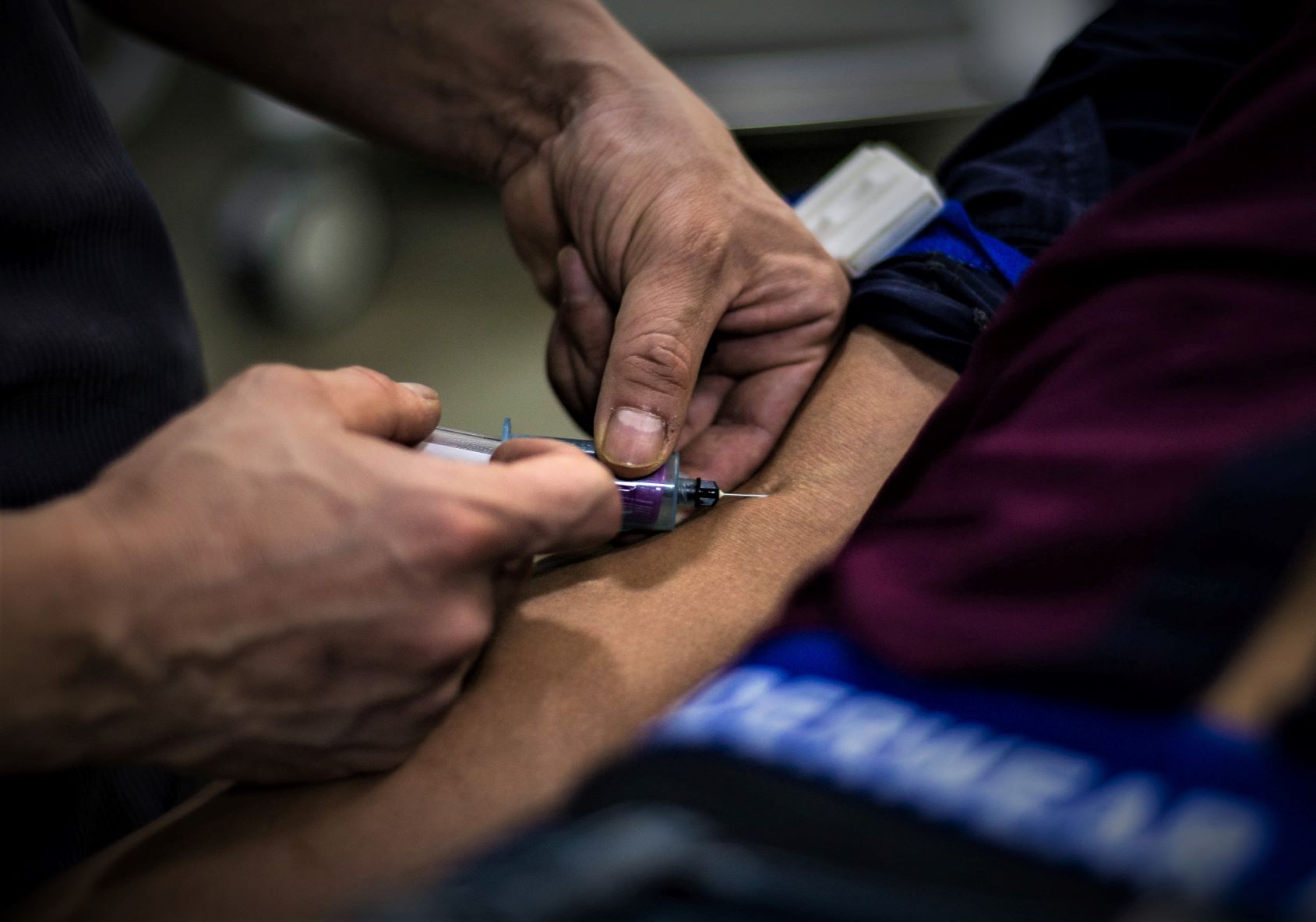
Meera Kanhouwa has seen the impact of America’s opioid epidemic all too first hand. As a veteran emergency medicine physician, she estimates that she has personally treated 70,000 patients with opioid-related afflictions: from pregnant addicts whose babies are born suffering from withdrawal symptoms, to thousands of overdose patients; some arriving at the emergency room dying; all at risk of relapsing.
Once at the medical front line of the country’s opioid crisis – where abuse of prescription pain killers, heroin, and synthetic opioids like fentanyl is estimated to cost taxpayers $78.5 billion yearly and kill hundreds of victims daily – the Potomac-based doctor is now a managing director at Deloitte, and the face of a new predictive analytics tool, built by the company on DataStax Enterprise and Google Cloud.
Demonstrated this week at DataStax’s Accelerate conference in Washington, Opioid360 is a predictive analytics platform designed to identify individuals at risk of becoming opioid addicts.
It combines a startlingly powerful melange of data with a UX similar to that of data mining company and law enforcement favourite Palantir. (Think of it the twenty-first century’s equivalent to the classic police pin board, where rubber bands and pins link parties of interest – but in the world of big data and machine learning, those rubber bands are made of public datasets, and no human fingers tug them to the next pin on the board; the tool finds its own patterns…)

Opioid360: Predictive Intelligence on Likelihood of Addiction
As Deloitte’s Sean Conlin tells a small, but packed room at the Accelerate Summit in Washington: “Law enforcement and human services have struggled to get actionable information that helps them do their jobs better. The data science community has an opportunity to really advance the ability of those on the frontline and identify those most at risk; Opioid360 aims to help do that.”
Meera Kanhouwa adds: “We can use it to identify patients sooner who are at risk, but not just that: 2.4 million people suffer from opioid use disorder. Opioid360 uses predictive analytics to help us understand three things: who is most at risk; what are the barriers to treatment; and what are the best interventions.”
A demonstration gives a flavour: research – and much modelling – has shown that those coming into a clinic with chronic pain (and likely to be prescribed painkillers as a result) are significantly more likely to become addicts if their personal data, when crunched by the platform, returns certain eclectic indicators, ranging from body mass index (BMI) to marital status; exercise to the macroeonomic status of the area in which they live; each adding a finely calibrated percentage likelihood of addiction in a model tested extensively against public datasets, Deloitte says.

Opioid360, which Deloitte says is based on 30 public data sets spanning 5,000 data elements, including medical history, and a wealth of other datasets like Google search term trends by area, can catch populations at risk of becoming opioid addicts right down to a hugely granular – indeed, the company admits individual – level.
The word “de-personalised” comes up again and again in the company’s presentations, but ultimately the market for the tools is public workers with access to highly personal public data, and as a demonstration of a sister service built for law enforcement personnel on the same architecture shows, link analysis is strongest when the “pins” in this virtual board are individuals. So for policy makers, is personalised pre-emptive medical care the future and AI the new augur?
The professional services firm’s Mike Daggitt told Computer Business Review: “Of course users can’t just go and knock on someone’s door; tell them that they’re going to become a drug addict. That’s a bit ‘Minority Report’. But by aggregating these datasets, we can build ‘personas’ that give you insight into how to prevent and treat addiction. For policy makers that means rather than hoping a one-size-fits-all approach works, they can identify the key things obstructing people from finding treatment, or falling into addiction after being prescribed painkillers for chronic pain. Then you might want to focus on that – it may be, build more treatment facilities in that neighbourhood; it may be a lack of transport to treatment facilities for the most at-risk population…”
“The economics of being able to make those targeted decisions are very compelling and more importantly, drive very effective outcomes.”
Meera Kanhouwa told the conference audience: “Why shouldn’t we use depersonalised big data and the cloud for healthcare and then get information nudges from that? If frontline workers can use it to drill down into very high risk populations that the system is not catching, then that saves lives.”
She added: “For example, we just identified a very high risk population in this state [Washington] that is at 90 percent risk [of addiction] according to our modelling – a population that is likely pregnant. We’d only know otherwise when we saw them in the emergency unit, with their babies are detoxing at birth…It is a completely preventable tragedy with a very high cost to society. These people are eligible for a wide range of benefits and if we can drill down to identify barriers to treatment rather than take a best guess approach, then everybody benefits from that.”
The team talks extensively about the use of Google search terms and analytics data during their presentation. Pressed on how access to this works, Deloitte’s Mike Daggit told Computer Business Review: “The states own [the public] data. We can then shoot that data over to Google and ask, what else you know about this neighbourhood? Google is effectively enriching public data sets…”
How Opioid360 is Built
How does the architecture work? (The datasets capture a population of 280 million and are updated monthly; many more regularly): “It’s MissionGraph [Deloitte’s data visualisation toolkit] built on DataStax Enterprise (DSE) and DSE Graph. It’s Cassandra, it’s Tamr,” says Daggitt, noting its speed and availability.
And Opioid360 is just one of a range of tools Deloitte has built using the architecture, technology principal Mark White said in a keynote.
He said: “Four years ago a big federal client came to us and said they had a problem they needed to crack. It was a $1.3 billion-a-year IT operation and they asked us if we could help. They needed a persistent property graph with very sophisticated capabilities that could be deployed at scale and which could run headless, reliably, and be always on. Four years ago that was a pretty hard equation to crack, but we did it. That was the start of a relationship that became an alliance that is playing out powerfully in the marketplace between Deloitte and DataStax.”
“They tell us now that what used to take five weeks now takes five clicks.”
Demonstrating, White clicks the name of a person of interest to law enforcement on a screen: radiating out of the graphic come the people associated with him, the cars registered at his address, medical history, the gang affiliations of his associates: “This is the same [principle] we are using for health surveillance which we have applied to a specific solution with Opioid360” he notes.
And while the faint of heart might blanche at what can be learned with 5,000 individual data points, a powerful data crunching engine and always-on database architecture of Apache Cassandra, to Meera Kanhouwa, it’s personal: “My friend, an anesthesiologist, overdosed on Mother’s Day, leaving two children.”
“If a physician who has access to care and who understands this feels that disconsolate and that they can’t be helped what are we missing from our approach to care management, prescriptions? This kind of story is not infrequent. When two people walk into my clinic with chronic back pain, if I can take advantage of the DataStax platform, layer predictive analytics on top and help identify who is at risk and what the best interventions are, that is absolutely the right thing to be doing.”






